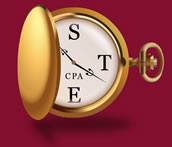Under a recently enacted law, eligible small and midsize employers can claim two new refundable payroll tax credits, designed to reimburse them, dollar for dollar, for the cost of providing coronavirus-related leave to their employees. The relief was enacted under the Families First Coronavirus Response Act, P.L, 116-127, signed by President Donald Trump on March 18, 2020.
The law requires paid sick leave and expanded family and medical leave for workers affected by the coronavirus and created refundable credits for eligible employers. Eligible employers are businesses and tax-exempt organizations with fewer than 500 employees that are required to provide emergency paid sick leave and emergency paid family and medical leave under the act. Eligible employers will be able to claim these credits based on qualifying leave they provide between April 1, 2020, and Dec. 31, 2020.
Equivalent credits are available to self-employed individuals based on similar circumstances. Self-employed individuals will claim the credits on their income tax return and will reduce estimated tax payments.
Small businesses with fewer than 50 employees are eligible for an exemption. To alleviate the stress on businesses during the pandemic, the new requirements are subject to a 30-day nonenforcement period from the Department of Labor (DOL) if employers make good-faith efforts to comply. The IRS has set out the contours of this relief in IR-2020-57 and has provided effective dates in Notice 2020-21.
To take immediate advantage of the paid leave credits and to ease employers’ cash flow, the IRS says eligible employers who pay qualifying sick or child care leave will be able to retain an amount of the payroll taxes equal to the amount of qualifying sick and child care leave that they paid, rather than deposit them with the IRS.
The payroll taxes that are available for retention include withheld federal income taxes, the employee share of Social Security and Medicare taxes, and the employer share of Social Security and Medicare taxes for all employees.
If employers’ payroll tax deposits are not sufficient to cover the cost of qualified sick and child care leave paid, employers will be able file a request for an accelerated payment from the IRS by submitting a streamlined claim form, which had not been released as of this writing. The IRS says it expects to process these requests in two weeks or less. The details of this new, expedited procedure will be announced next week.
Small business exemption
A small business with fewer than 50 employees will be eligible for an exemption from the leave requirements relating to school closings or child care unavailability, where the requirements would jeopardize the business’s ability to continue. The IRS says the exemption will be available “on the basis of simple and clear criteria that make it available in circumstances involving jeopardy to the viability of an employer’s business as a going concern.” The DOL is directed to provide emergency guidance to explain this standard.
Nonenforcement period
The DOL will issue a temporary nonenforcement policy that provides a period of time for employers to come into compliance with the act. Under this policy, the DOL will not bring an enforcement action against any employer for violations of the act so long as the employer has acted reasonably and in good faith to comply with the act. The DOL will instead focus on helping employers comply during the 30-day period.
Effective dates
Tax credits for qualified sick leave wages and qualified family leave wages will apply to wages paid for the period beginning April 1, 2020, and ending Dec. 31, 2020. In addition, days occurring during the period beginning on April 1, 2020, and ending on Dec. 31, 2020, will be taken into account for credits for qualified sick leave equivalent amounts and qualified family leave equivalent amounts for certain self-employed individuals.
Examples
The IRS provided the following examples of how the retention of payroll taxes will work:
If an eligible employer paid $5,000 in sick leave and is otherwise required to deposit $8,000 in payroll taxes, including taxes withheld from all its employees, the employer could use up to $5,000 of the $8,000 of taxes it was going to deposit for making qualified leave payments. The employer would only be required under the law to deposit the remaining $3,000 on its next regular deposit date.
If an eligible employer paid $10,000 in sick leave and was required to deposit $8,000 in taxes, the employer could use the entire $8,000 of taxes in order to make qualified leave payments and file a request for an accelerated credit for the remaining $2,000.


Leave A Comment